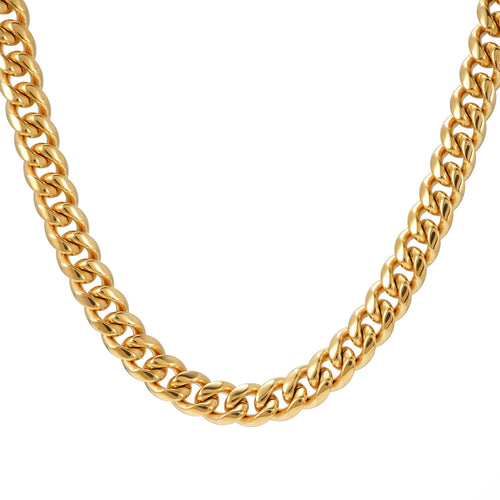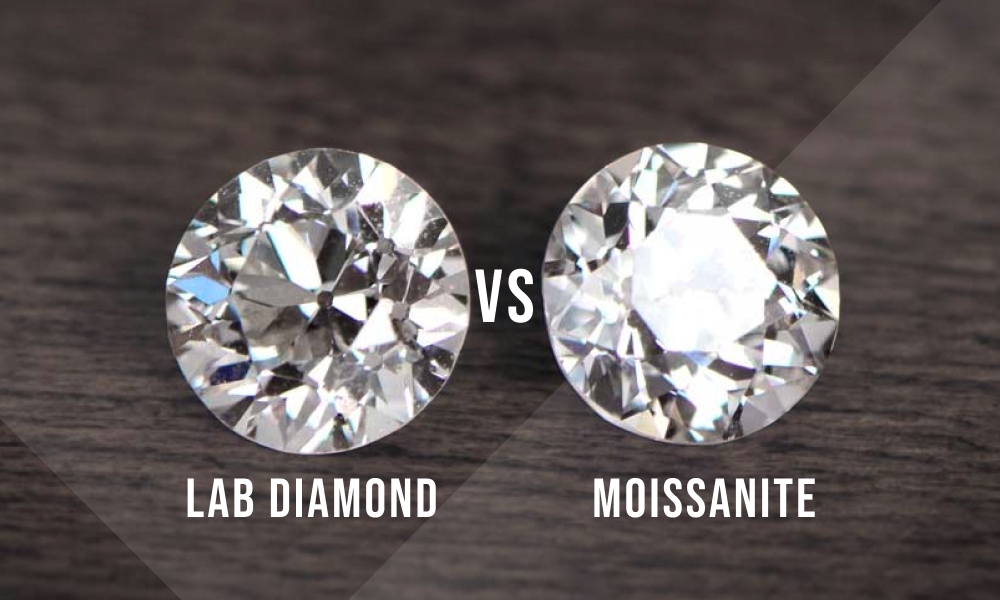The choice of metal in jewelry is pretty versatile. No matter what your preferences, style, or budget are, you can choose from multiple options to achieve the desired aesthetic.
Sterling silver and stainless steel are two of the most popular metals, especially for those who appreciate timeless and sleek accessories at an affordable price.
But what are the differences between sterling silver vs. stainless steel?
Although quite similar appearance-wise, these two metals have unique characteristics. Sterling silver and stainless steel have different compositions, properties, durability, and aesthetic value. And understanding these differences is crucial for making an informed decision in jewelry and other applications.
In this ultimate comparison guide, we compare and contrast the composition, properties, durability, visual aspects, prices, and maintenance needs of sterling silver and stainless steel. We also explore the benefits and drawbacks of each to help you choose the one that best suits your needs and reflects your personal style.
Composition and Properties

The main difference between stainless steel and sterling silver is the composition of the two alloys. As they have distinctive metal compositions, their properties differ from each other as well.
Sterling Silver
Metal Composition
Sterling silver is an alloy composed of 92.5% pure silver and 7.5% other metals, usually copper and sometimes zinc.
Due to the softness of pure silver, it’s hardly ever used for making jewelry. If you’ve been wondering what your silver accessories were made of, it’s most likely 925 sterling silver.
Properties
As pure silver is a soft metal, copper is added to increase the hardness and strength of the alloy. Still, sterling silver is characterized by softness and malleability, making the alloy quite easy to work with.
While copper increases the strength of sterling silver, it also makes the alloy more prone to tarnishing. When compared to pure silver, sterling silver tarnish can be more noticeable and darker in color.
Stainless Steel
Metal Composition
Stainless steel is an alloy composed of mainly iron, some carbon, at least 10.5% chromium, and other elements, such as molybdenum, nickel, and manganese. While the composition of stainless steel alloys depends on the specific applications, iron and chromium remain the primary components in all stainless steel metals.
There are several popular stainless steel series, including the 200, 300, and 400 series.
For example, the 200 series stainless steel consists of 16–18% chromium and 5–7% manganese.
For the 300 series, the major alloying additions of stainless steel are 18–30% chromium and 6–20% nickel.
In the case of the 400 series, the stainless steel alloy is made from 11–27% chromium, around 1% carbon, and a maximum of 2.5% nickel.
Properties
Due to its composition, stainless steel has improved strength and durability, including resistance to corrosion and tarnishing.
Certain stainless steel grades also offer excellent hypoallergenic benefits. For example, 316L stainless steel is a jewelry-grade alloy with a low-carbon and high-chromium content, making it ideal for people with sensitive skin.
You'll also enjoy: Difference Between Four Types of Gold Jewelry
Jewelry Hallmarks
The easiest way to differentiate between sterling silver vs. stainless steel is to look for the hallmarks. These are special marks stamped on metal alloys to certify their standard of purity.
Here’s how to locate jewelry hallmarks:
On chains and necklaces, the hallmarks are stamped near or on the clasps;
On bracelets, the hallmarks can be seen near/on the clasp or on the inside of the band;
On rings, the hallmarks can be located on the inside of the band;
On earrings, the hallmarks can be found on the post or the back of the earring.
Sterling Silver Hallmark
Since sterling silver is made of 92.5% sterling silver, the hallmark stamped on sterling silver jewelry and alloys is “925” or “S925.”
Make sure not to confuse the 925 stamp with the 950 hallmark. 950 silver, also known as the French 1st standard, is a higher-purity silver alloy made up of 95% pure silver and 5% copper.

Stainless Steel Hallmark
As the composition of stainless steel isn’t fixed, the hallmarks are stamped based on the families and grades.
Stainless steel families fall into four categories, each giving us information about the ratio of various metals in the alloy. These include:
Austenitic stainless steel
Ferritic stainless steel
Duplex stainless steel
Martensitic and precipitation-hardening stainless steel
Stainless steel grades provide further information about the alloys within these families. They tell us more about the properties of a given alloy, such as corrosion resistance, magnetism, strength, and more.
Some of the most popular stainless steel hallmarks are 201, 201L, 202, 204, 303, 304, 310, 316, 321, 410, 416, 420, and 431.
Durability and Longevity
Durability is one of the most crucial factors to consider when choosing between various materials for your jewelry.
Undoubtedly, accessories crafted from both sterling silver and stainless steel look absolutely gorgeous. But what about their relative long-term values? Which one will remain in its original condition?
Let’s compare sterling silver vs. stainless steel in terms of durability and longevity.
Sterling Silver Durability
Strength and Wear
Sterling silver is considered a durable alloy for jewelry-making. However, it’s also characterized by softness, meaning that it may easily get scratched or damaged.
While the softness may not be an issue for bulky jewelry, delicate pieces may easily break.
Besides, sterling silver has a higher tendency to develop scratches and dents, especially when worn daily or layered with other accessories.
Due to the copper content, sterling silver is more susceptible to tarnishing when coming into contact with water, moisture, skincare products, or other substances. Sterling silver jewelry can easily change color when worn during physical activities.
Longevity Considerations
Although sterling silver is not as durable as stainless steel, proper care and handling can extend its life.
The key here is to avoid wearing your silver jewelry while swimming, exercising, or being involved in any sort of physical activity.
You should also avoid using harsh chemicals for cleaning the jewelry as well as skincare products that could potentially tarnish the metal.
Note that no matter how well-maintained or carefully handled your jewelry is, sterling silver will still remain more susceptible to damage.
If you are looking for some long lasting sterling silver jewelry, check these out!
Stainless Steel Durability
Robustness
Stainless steel is characterized by higher strength than sterling silver. It’s hard to bend or break, making stainless steel jewelry quite durable and long-lasting.
Thanks to the added metals, stainless steel also offers excellent scratch resistance, making it an ideal option for those who adore mixing and matching or layering different accessories.
Corrosion Resistance
One of the main reasons why stainless steel jewelry is so popular is its chromium content, which makes the alloy highly resistant to rust and corrosion. The rationale behind this is that the chromium in stainless steel reacts with the oxygen in the air, forming a protective layer against corrosion and rust.
As stainless steel won’t tarnish over time, it’s a perfect choice for daily wear, even when exposed to moisture or other substances.
Maintenance and Care

Taking care of your sterling silver and stainless steel jewelry is essential to maintaining its lustrous appearance and enhancing its longevity. Both metal alloys can deteriorate over time due to exposure to air, moisture, and various chemicals.
Through regular cleaning and proper storage, you can prevent your silver jewelry from tarnishing and minimize scratches or dents. Similarly, well-maintained and adequately stored stainless steel jewelry can retain its shine for a longer period of time.
Here’s how you should care for sterling silver vs. stainless steel.
Caring for Sterling Silver
Cleaning Methods
As sterling silver can easily get scratched and is also prone to tarnishing, regular cleaning and polishing is crucial. There are a few ways to care for your sterling silver jewelry.
- Dish Soap and Water: At least once a week, it’s recommended to soak sterling silver jewelry in some dish soap and warm water and let it sit for at least 10-15 minutes. Then rinse the accessories with warm water and dry them with a clean microfiber cloth. This is an effective technique that removes any dirt and grime buildup from sterling silver.
- Vinegar and Baking Soda: If soapy water doesn’t work, it’s most likely because sterling silver has tarnished. In this case, a solution of vinegar, lukewarm water, and baking soda will quickly restore your jewelry or tableware. Let the sterling silver soak for an hour or two and give it a good rinse before drying.
- Lemon Juice and Baking Soda: As an alternative, you can mix some lemon juice with baking soda and use a soft-bristle brush to gently clean the sterling silver. This method will help you remove dirt and oil buildup while getting rid of that stubborn tarnish.
- Anti-Tarnish Solution: While cleaning sterling silver is important, protecting the alloy is just as crucial. Anti-tarnish solutions have been specially developed to create a protective film on the surface of the sterling silver and prevent it from tarnishing.
Storage Tips
Properly storing sterling silver jewelry is one of the most effective ways to minimize damage and extend its life.
When storing the sterling silver, you should keep the area completely dry. Ensure that the jewelry is stored away from excessive exposure to air, light, moisture, or extreme temperatures.
As sterling silver is relatively soft, it may easily get scratched when stored with other jewelry. Try to store the sterling silver in individual pouches or in a multi-compartment jewelry organizer.
Ideally, you should store sterling silver in a tarnish-proof cloth that keeps the items clean, bright, and shining. This will also reduce the need for endless cleaning and polishing.
Caring for Stainless Steel
Maintenance Techniques
Stainless steel is easier to maintain than sterling silver. You don’t need any fancy tools or concentrated cleaning solutions to keep the glossy finish.
A mixture of dish soap and warm water should be enough to thoroughly clean the stainless steel. Just fill up a bowl with warm, soapy water and soak the jewelry or other items for as long as it takes to remove dirt and grime. To finalize, rinse with clean water and dry with a soft cloth.
As stainless steel doesn’t tarnish, there’s no need to use acidic solutions or alkaline baking soda for cleaning. If you feel like your stainless steel jewelry requires some good cleaning, then feel free to use vinegar or lemon juice mixed with baking soda.
Tips to Avoid Damage
Although stainless steel is durable, doesn’t scratch easily, and has excellent corrosion resistance, it’s still recommended to avoid using harsh chemicals or abrasive brushes.
A gentle cloth and a mild cleaning solution will be enough to thoroughly clean your stainless steel jewelry and keep it maintained.
Aesthetic Differences
Due to having different compositions and properties, we can also tell sterling silver and stainless steel apart based on their visual features.
While both can be characterized as shiny, elegant, timeless, and captivating, there are a few differences in terms of overall appearance. That being said, sterling silver and stainless steel offer versatile styling options, each suited to a particular aesthetic and occasion.
Appearance of Sterling Silver
Classic Look
Sterling silver has a milky white and gray metallic color. It’s the silver color we’re most familiar with.
A very bright and shiny finish makes sterling silver a perfect metal choice for crafting sparkly jewelry.
Due to the presence of copper in sterling silver, the alloy may develop a patina (discoloration) over time, adding to its character.
Versatility in Design
Sterling silver accessories are renowned for their versatility. As sterling silver is a malleable alloy, it’s quite easy to craft intricate and delicate jewelry designs.
Additionally, sterling silver accessories are suitable for pretty much any outfit or occasion. Whether you’re going on a walk or attending a formal event, you can never go wrong with a pair of sterling silver earrings and a sparkly necklace with a matching bracelet.
Appearance of Stainless Steel
Modern Appeal
Stainless steel, on the other hand, has a silver-gray color with a duller and darker tone when compared to sterling silver. It has a shiny metallic appearance, giving it a sleek and contemporary look.
Stainless steel is available in various finishes, including brushed, polished, and matte. This makes the stainless steel jewelry even more versatile and easy to style.
Stainless steel accessories can create modern and minimalistic looks as well as urban and edgy styles.
Consistency in Appearance
When talking about the visual aspects of stainless steel, we should mention the consistency it provides.
Thanks to its high corrosion resistance, stainless steel alloys retain their original appearance with minimal tarnishing or change in color.
However, keeping your stainless steel jewelry well-maintained is key to protecting that shiny finish and sleek appearance.
Cost Considerations

When choosing between sterling silver vs. stainless steel, it’s important to address a few cost considerations.
While both alloys are quite affordable, especially when compared to gold and platinum, opting for one is still an investment. So, it’s important to understand the price and value of each to make an informed decision.
Sterling Silver Costs
Price Factors
Generally speaking, sterling silver is more expensive than stainless steel due to the higher cost of pure silver.
Silver is a precious metal, and its content in sterling silver is 92.5%, which makes it expensive.
Besides, sterling silver is a popular and highly sought-after alloy that has been used in jewelry for centuries. Therefore, the demand for sterling silver jewelry and tableware contributes to its higher price when compared to stainless steel items.
Additionally, sterling silver is often incorporated into intricate and complex designs that require a higher level of craftsmanship. Silversmiths may need to use advanced techniques when crafting sterling silver products, adding to their value.
Value Over Time
Sterling silver is often considered luxurious, elegant, and timeless. Therefore, consumers often perceive it as more valuable, which justifies a higher price point for sterling silver jewelry and tableware.
Along with that, sterling silver can hold its value and even appreciate, making it a better long-term investment than stainless steel.
Stainless Steel Costs
Affordability
As stainless steel is an alloy of mainly iron with some other metals, the cost is lower than that of a sterling silver alloy. Therefore, stainless steel is a cost-effective option that offers similar visual features and enhanced durability.
Stainless steel is perfect for budget-conscious buyers who want to invest in high-quality, corrosion-resistant jewelry or other items that are made to last.
Long-Term Value
While the value of stainless steel jewelry may decrease over time, it still has a high long-term value, all thanks to its durability and low maintenance needs.
Besides, stainless steel jewelry is pretty versatile, allowing you to easily style or layer individual pieces with other accessories. With just a few accessories, you can create a wide range of styles and aesthetics, contributing to the high long-term value of stainless steel.
Uses and Applications
What’s the difference between stainless steel and sterling silver in terms of their uses?
Both sterling silver and stainless steel have numerous applications in many different industries. However, due to their distinctive properties, one can be favored over the other.
Understanding the common uses and applications of sterling silver vs. stainless steel is essential for choosing the right metal alloy for you. Here’s what you need to know.
Sterling Silver Applications
Jewelry
Sterling silver is a popular alloy used in jewelry-making. Due to its high malleability and luxurious shine, it’s often used for making all sorts of fine jewelry, including rings, necklaces, earrings, and bracelets.
As sterling silver is quite easy to work with, it’s often incorporated into complex designs with tiny and intricate details.
In addition, sterling silver is ideal for crafting jewelry pieces that include gemstones, even precious ones.
Other Uses
Besides jewelry, sterling silver is used in personal accessories, including belt buckles, keychains, money clips, cufflinks, and more.
Sterling silver also has various other applications, such as flatware, cutlery, tableware, decorative items, antiques, collectibles, and electronics.
Thanks to the exceptional shine of sterling silver, some artists work with the alloy to create exclusive sculptures and luxurious decorative art pieces.
Stainless Steel Applications
Jewelry
Stainless steel is mainly used for making contemporary and industrial-style jewelry, including watches and body piercings.
Stainless steel is also commonly used for crafting men’s jewelry. This is because the alloy has a darker metallic color that’s often associated with masculinity.
Other Uses
Due to the durability and affordability of stainless steel, it’s a popular material for kitchenware and cookware. As stainless steel is resistant to corrosion, heat, and staining, it’s ideal for making pots, pans, utensils, countertops, and sinks.
Depending on the grade of stainless steel, the alloy can be hypoallergenic. Therefore, it’s commonly used in medical instruments.
Additionally, stainless steel is often used in architectural projects for its strength and durability. It’s a popular option for building facades, roofing, decorative elements, and other structural components.
Pros and Cons
What’s better: stainless steel or sterling silver?
There’s no specific answer to the question. The easiest way to find the right metal alloy for you is to consider the benefits and drawbacks of each.
With their unique composition, properties, and characteristics, sterling silver and stainless steel offer contrasting advantages and disadvantages. Here are the major pros and cons of these alloys to help you make an informed decision.
Sterling Silver Pros and Cons
Pros
It’s a precious metal alloy consisting of 92.5% pure silver
Offers an incredibly lustrous finish with a bright milky white to gray metallic color
Has a luxurious and timeless appearance
Characterized by high malleability
Easy to work with when creating intricate designs
Can be used for creating jewelry that incorporates gemstones
Offers versatility for silversmiths
Can be easily repaired when broken or damaged
Offers durability due to the added copper in the alloy
Doesn’t lose its shine easily when maintained properly
Will hold its value over time, making it a reasonable investment
Offers versatile styling options and can be combined with other accessories
Cons
Can be more expensive than stainless steel
It oxidizes and tarnishes over time when exposed to air, moisture, or chemicals
Is prone to developing scratches and dents due to the softer nature of pure silver
Not hypoallergenic, so may not be suitable for those with sensitive skin
Requires regular cleaning and polishing
You may need additional anti-tarnish solutions to maintain its luster
Stainless Steel Pros and Cons
Pros
More affordable and cost-effective than sterling silver
High corrosion and scratch resistance
Enhanced strength and durability
Nice dark gray metallic shine that lasts longer
Comes in several finishes, including glossy, brushed, and matte
Doesn’t tarnish or change color
Ideal for everyday wear
Requires less maintenance and cleaning
No need for special solutions
Certain grades are hypoallergenic and suitable for people with sensitive skin
More hygienic due to its non-porous nature
Versatile and easy to style to achieve a contemporary aesthetic
More environmentally friendly as it can be recycled
Cons
Not a precious alloy
Less valuable
May not feel as luxurious as sterling silver
Resizing or repairing may not be easy due to rigidity
Doesn’t appreciate, so not suitable for long-term investment
May develop discoloration under certain conditions
Conclusion
Out of so many metals and alloys, sterling silver and stainless steel are among the most popular options for making jewelry, decorative items, kitchenware, and even medical instruments. While both offer durability, an exceptionally shiny finish, and versatility, there are some major differences you should address to opt for the one that suits your needs.
But what’s the difference between stainless steel and sterling silver?
When comparing sterling silver vs. stainless steel, the major differences are in their compositions and properties. While sterling silver consists of 92.5% pure silver and 7.5% copper, or sometimes zinc, stainless steel is primarily made of iron, at least 10.5% chromium, and other alloying elements.
Due to the composition of these two alloys, sterling silver is more prone to scratches and tarnishing. Stainless steel, on the other hand, is stronger, more durable, and offers excellent corrosion resistance.
In terms of maintenance, sterling silver requires regular cleaning and polishing, whereas stainless steel has lower maintenance needs and is quite easy to care for.
When it comes to aesthetic differences between sterling silver vs. stainless steel, sterling silver has a luxurious and timeless look, while stainless steel is more suitable for contemporary and edgy styles.
Price-wise, sterling silver is more expensive, but it’s also a good long-term investment. Contrarily, stainless steel is an affordable and cost-effective alternative, but it doesn’t appreciate over time.
So, what’s better: stainless steel or sterling silver?
At the end of the day, it’s totally up to you. By understanding the properties, characteristics, benefits, and drawbacks of both sterling silver and stainless steel, you can easily make the right choice.
Keep in mind that it’s essential to consider your specific needs and preferences to determine whether sterling silver or stainless steel is the right metal option for you.







































































